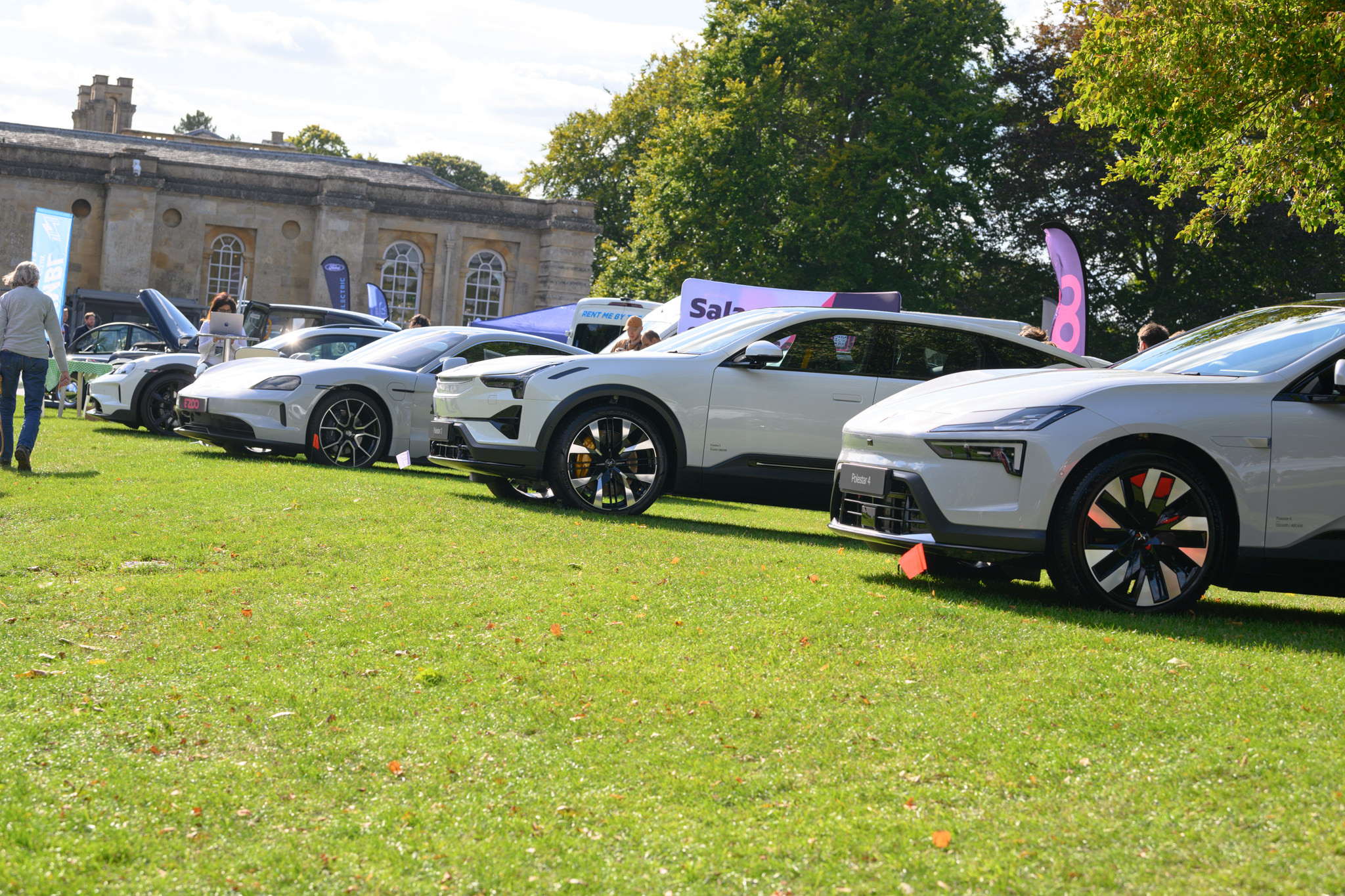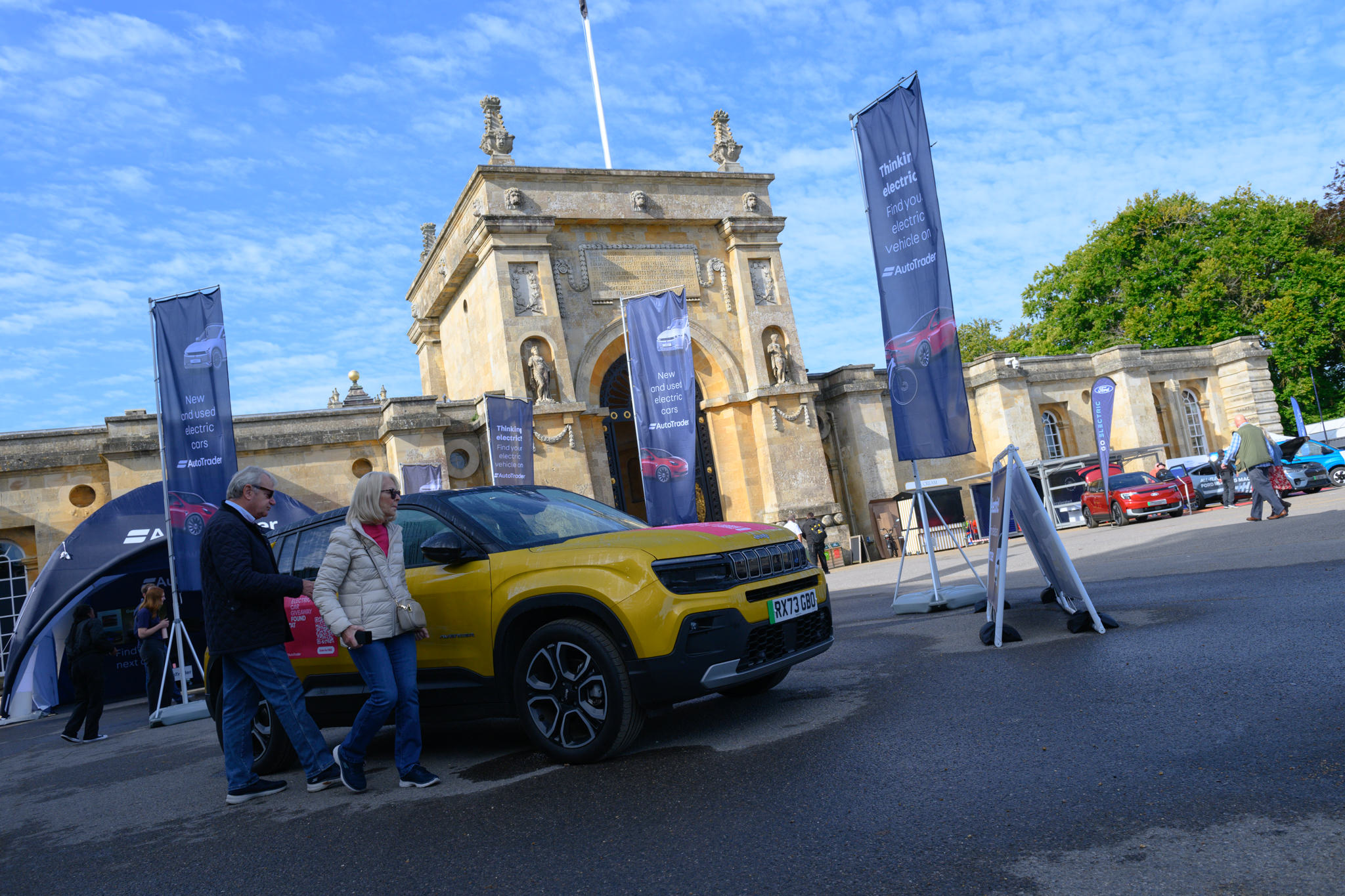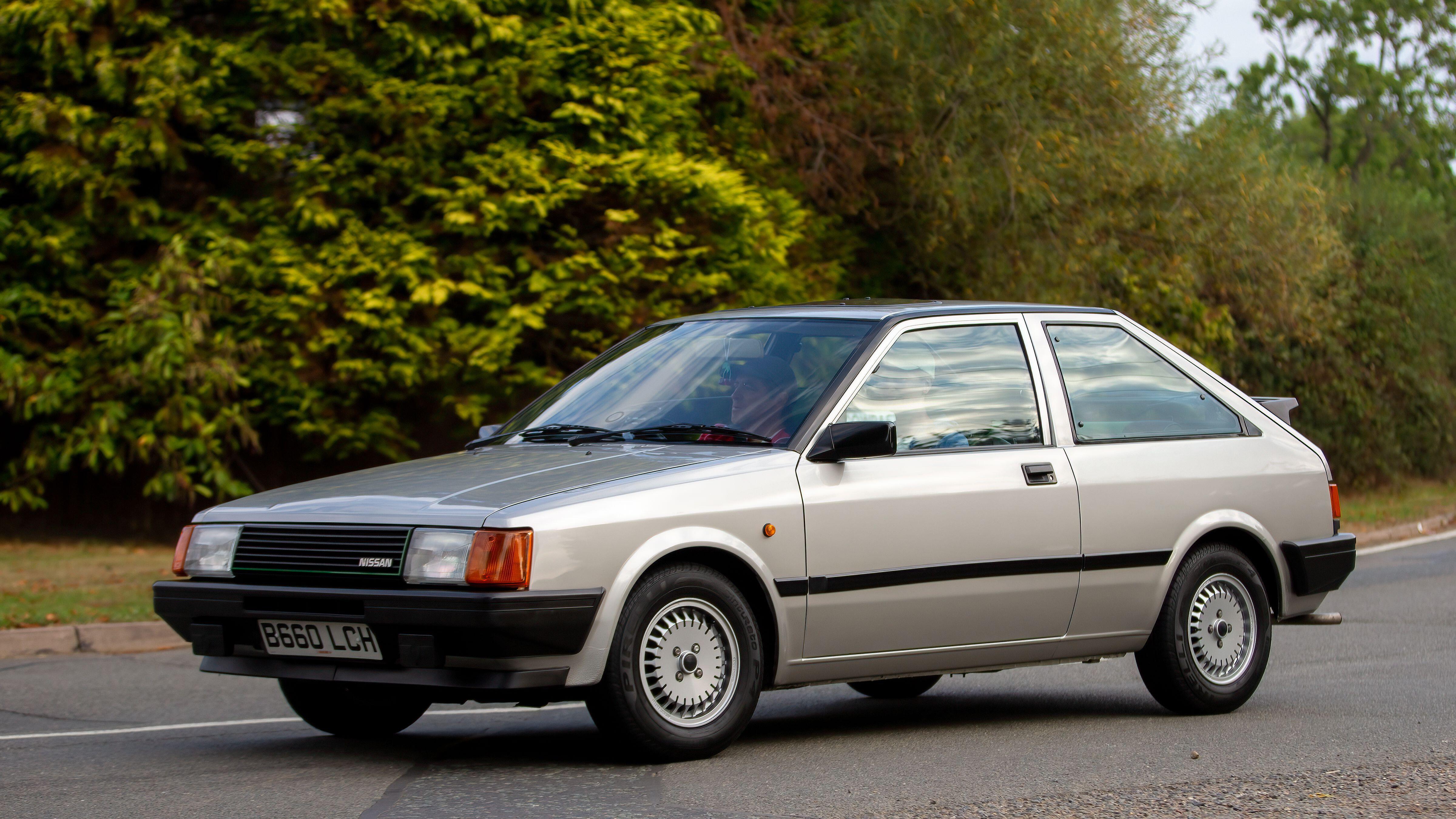The great electric car conundrum: In 35 years, driving a petrol car will be like driving a steam engine. But is now the time to make the switch to an EV?
To EV or not to EV? That is the question for car buyers today, whether they're looking for a new car or going second hand. So is now the time to take the plunge? Toby Keel takes a look.

I’m not quite sure why I decided to turn up to a car show on foot, but it wasn’t a good idea.
Oh, sure, everything started beautifully: I wandered across spectacular Oxfordshire fields, weaved through cool woodland paths and ambled beside glistening rivers while heading for Blenheim Palace, the venue for September’s EV Live. It was perfect — right up until I realised that I'd got lost.
And as well as being hopelessly lost, I was also running late and beginning to panic. I found myself checking my phone’s map constantly, looking everywhere for the right turn to get to where I needed to be, and eventually hopping a couple of fences which I’m really not sure I was supposed to be clambering over. I got there in the end, and just about on time, but stressed, sweating, and with both heart rate and blood pressure far higher than my GP would like them to be.
It was only later, I realised, that this was an ideal metaphor for driving an electric car — or EV, as they're becoming universally known — and specifically the range anxiety you might have heard about. At first, the experience is pure joy: smooth, quiet, powerful, and — unless you’re married to the idea of a raucously noisy motor — unparalleled by any normal internal combustion engine. Yet when things go wrong, driving electric is an experience that can quickly leave you feeling lost, worried and fretful. Where is the nearest charger? Am I going to make it? Will it be working when I do? Do I have the right account set up to connect? Is it all too late anyway?
It's undeniable that five years ago, range and charging issues were a serious barrier to EV ownership. The problem is that while the landscape has changed enormously, you'll still find plenty of nay-sayers perpetrating the view. Research by Auto Trader backs this up, with many drivers worried about the availability of public chargers, the cost of using them and the time it takes to charge an EV's battery. A lot of work is yet to be done to convince people that while EVs fall short of petrol and diesel cars in some areas, they outshine them in more than enough of the others to make the compromises worthwhile.
EV Live itself proved to be an event for those who are already convinced — and exists primarily as a huge test drive, allowing people to try out cars such as the MG4 (surprisingly excellent), the Ford Mach-E (surprisingly raucous) and the Polestar 2 (surprisingly perfect — I still don't understand why more people don't choose these over Tesla Model Ys). As I wandered through the stalls at the Blenheim Palace event, enthusiastic punters were happily looking at the sea of gleaming metal, and you were hard pushed to find anyone with a bad word to say about electric cars.

Not all the vehicles were driveable — I spotted converted classic cars, a curious bubble car that is made by the Micro scooter company, and the new electric Renault 5 — but plenty were, and the ability to try as well as just gawp, as you do at most car shows, was clearly a huge draw. Dozens lined up to take the cars on a circuit through the neighbouring villages and countryside. There was expertise and enthusiasm in abundance, in the most beautiful of surroundings. Even the sun shone.
Exquisite houses, the beauty of Nature, and how to get the most from your life, straight to your inbox.
That overwhelming sense of optimism flies in the face of some of the negativity you’ll find in some of the press. While almost all the motoring press is happily behind EVs, barely a day seems to go by without one complaint or another in the comment and opinion pages, not least from the Daily Telegraph’s motoring correspondent, who recently published a ferocious attack on the electric car experience after a summer of racking up 3,000 EV miles.
Is there truth in his article? As I mentioned above, there certainly used to be. The first time I drove an EV was just under three years ago, when I borrowed an Audi e-tron GT for a trip to the Cotswolds. The car itself was stunning: fast, wonderful inside, a magical ride, beautifully appointed… but the experience was suffused with stress. Every charger within 10 miles was either completely broken, didn’t exist any more, or refused to juice up the battery at more than a trickle. In the end, with a long drive and a deadline to get there, I gambled on heading for a charger 25 miles away which had consistent five-star reviews on ZapMap. We made it with a few miles of electricity left in the battery, charged at top speed, and made it to our destination — a place which, mercifully, had its own wall charger. We never looked back, and the trip ended up being a delight. Yet even still, I’ve rarely been more relieved to hand back the keys to a borrowed vehicle.
Since then, the world of EVs has moved on hugely. There are more than twice as many electric cars on the roads, and double the number of public charging points too (roughly 70,000 in Britain today, according to ZapMap’s figures). Getting a wall charger installed at home has gone from being slightly bizarre to entirely commonplace, and salary sacrifice schemes offering tax-deductible car leasing schemes have helped thousands of new owners come in to the market. New build flats are required by law to install EV chargers, so long as the flats in question have parking spaces. EVs themselves are getting cheaper, both thanks to inexpensive Chinese disruptor brands like BYD, and the established car manufacturers seemingly accepting that rather than hope everybody will somehow be able to spend £80,000 on a swish executive EV, they’re going to have to make more of an effort in the sub-£30k market.

Are there still challenges? Of course — but there are also solutions, and reasons for that optimism. Electric charger installations are currently keeping up with new EV sales, but they won’t do as and when sales pick up, and the pace appears to be well short of that needed to hit the government target of 300,000 public chargers being available by 2030. Those who have driveways and wall chargers are already enjoying the best of EV ownership, and average savings of £840 a year, according to AutoTrader’s figures. For the rest of the population, simple and affordable access to charging points, whether on the street, at offices, shops or elsewhere, will need to be a prerequisite of widespread EV adoption.
There is also vast disruption in the motoring business. To get manufacturers on course to hit the target of phasing out non-electric new car sales by 2035, the government introduced sales quotas which simply aren't being hit by the old established car makers, leading to all sorts of quota trading, pre-registering of vehicles and more. The used car market is in a spin as well: the fears about battery longevity have recently been disproved, making second-hand EVs much more popular — though not so much that depreciation isn't making ripples in the car leasing market.
Such problems are about temporary market imbalance rather than an underlying, unfixable issue. The same could be said of the shortfall in the number of mechanics trained and certified to repair electric vehicles, and the issues about getting spare parts. Clearly this sort of problem leaves money on the table for those who fix it, meaning it'll come out in the wash. And at least EVs will likely need less fixing over their lifetimes, thanks to the fact that their drivetrains use 90% fewer moving parts than internal combustion engines. Add in the constant stream of new models across the price range — from last year's big launch, the Rolls-Royce Spectre, to that new Renault 5, which somehow feels simultaneously retro and futuristic — and there's a lot to get excited about.
So if things are improving, why isn’t everyone convinced? The fact is that the car market hasn't seen change like this in over a century. Even range anxiety isn't new: if you read early tales of motoring, you find descriptions of drivers trying to find places that sold 'Motoring Spirit', as petrol was then called, often stocked only by the local pharmacy.
And the end game here is clear. Electric cars are coming, and they will take over the market — it isn’t even a question. They are better to drive, simpler to maintain, and can be operated using electricity that we will, in time, be able to generate truly cleanly, whether via wind, solar or tide.
In 35 years, driving a petrol car will be like going to the shops in a steam traction engine. They'll be as common as fax machines, or computers running Windows 95. They’ll be a beloved curiosity, still cherished by enthusiasts, preserved and enjoyed. But they will essentially be museum pieces.
So the problem isn't that change isn't coming, or should be postponed or cancelled. It's simply that the pace of change is making such vast turbulence, as AutoTrader’s Editorial Director Erin Baker explains: ‘With this change comes uncertainty and confusion as more consumers ponder if and when they should make the transition to electric, especially as we move closer to the ban of new petrol and diesel cars in 2035.
‘There is still a huge lack of confidence and misinformation when it comes to making the switch to electric, as some may feel that EVs are either too expensive or that the infrastructure to support electric vehicle charging isn’t there at the moment.’

One thing will always help adoption: pricing, and that's all going in the right direction. Cheaper EVs are beginning to come to the market, second-hand EVs are becoming more and more established, two facts which have seen Auto Trader's EV sales go up 63% in a year.
‘Right now, one in three second hand electric vehicles are under £20,000,’ Erin adds, pointing out that for this sort of money you can get a Polestar 2 or a Volkswagen ID.3. Even electricity prices have started coming down — especially for drivers who can charge at home on an overnight tariff that can top a car up to full for a few pounds., with the average driver saving £840 a year if they mostly charge at home.
So the only question now is when you're going to end up swapping your petrol or diesel car for an EV. Right now, with the aforementioned backlash finding some traction, there are discounts on new EVs, attractive prices of used models, and the momentum, legislation and effort only going in one direction. As Erin puts it, ‘it’s a great time for many to confidently make the switch.’
You can read AutoTrader's Road to 2035 report, or see Country Life's run-down of our favourite cars here.

'I loved it like a best friend, and shed a tear when it was finally consigned to the great junkyard in the sky': Country Life's team on our first cars
The L-plates are off and it’s time to hit the road. Everyone remembers their first car, so James Fisher asked

Banning sale of fossil fuel cars from 2035 is the right thing to do — but countryside pressures could keep the diesel pumping for decades after that
The future of cars is electric — can ONLY be electric, eventually — but the timetable for us to switch over could

Behind the scenes at Blenheim Palace, from the £40m leaky roof to towing visitors stuck in muddy fields
Toby Keel is Country Life's Digital Director, and has been running the website and social media channels since 2016. A former sports journalist, he writes about property, cars, lifestyle, travel, nature.

